Hello buddies! Welcome to another episode in the series of “What I learnt for the week”. And as you may have actually known, the idea was initiated by @mobbs, of whom I am still grateful for the privilege to be a partaker.
Over the course of the week (29th January – 2nd February), I learnt quite a number of amazing things, and I would pick out 5 of them to represent the discoveries I made for each day (in my defense, they are picked at random, in no specific order).
Phewwww! So much intro speech; let’s hit straight to the discoveries I made for the week.
Monday: Johnny Matheny’s $120million Modular Prosthetic Limb (MPL)
Just as you may noticed, I normally resume each episode with one of my favorite fields; Robotics.
Advances in prosthetics have grown drastically in this era. Before now, the only purpose of prosthetics was to replace missing part of the body, but this has gone way beyond that. The debate that humans may become “cyborg” in the future has been overridden, because, Johnny Matheny is already living in this future.
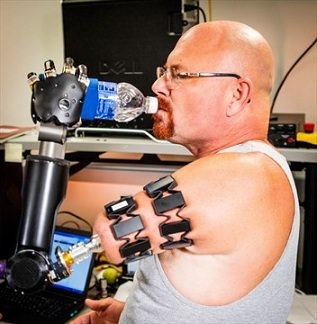
Johnny Matheny lost has arm in 2005 to cancer, and has become the first man to receive the Modular Advanced Mind-Controlled Robotic Arm (modular prosthetic limb). The arm was designed by John Hopkins Applied Physics Lab which was fully sponsored by the US DARPA (Defense Advanced Research Project Agency) in their quest to revolutionize prosthetics. And yes; this prototype design took 10years to design, and a whopping $120million. But is it really worth it? Let’s find out.
Mechanics of MPL
The prosthesis was designed to be controlled by the brain’s neural activity; just like the biological limb, with an independent movement of the individual fingers. In other words, the prosthesis feels wholly natural, with the psychomotor functions of the biological arm. I had to search for a youTube video of this arm, and yeh!! I found one [from Nojamev Osi’s youtube account] :)
This prosthesis is entirely controlled by Johnny’s mind, and according to researchers at the John Hopkins lab, the arm would be tested on Johnny for one year, after which plans for commercialization would begin. In my opinion, revolution has arrived in the field of prosthesis.
Future research
As you may have known, there is no limit to how far technology can go. Bit in this area of prosthesis, one functionality that needs to be added to MPL is the ability to make it water-resistant, since Johnny’s arm does not include this functionality yet. But remember, this arm is set to be tested for one year, and more features could be added.
Have I piqued your interest? You can check out for more details here.
Tuesday: Three-parent baby
Naturally, the basis behind the reproduction of humans is by the fertilization of an ovum by sperm cell (each of them donating half of their genetic materials) to produce “you”.
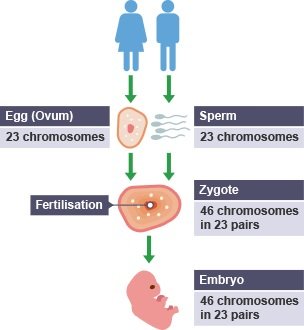
But these 23pairs of chromosomes are not the only sets of genetic instructions needed; there are also genetic instructions in the mitochondrial DNA. This is where genetic advances have leveraged on. This mitochondrial DNA can actually be donated by a third person in the case of extreme genetic disorder.
You already know that the genome of an individual encapsulates more than 20,000 genes, which is responsible for the characteristics possessed by the individual, which is stored in the nucleus of the cell. But also, in a cell structure, there is the mitochondrion which powers the cell by converting chemical energy from food into cellular energy.
But these mitochondria also possess their genetic instructions (that is 37 genes from the mother’s DNA only). So right after the fertilization of the ovum, the mitochondria from the father (in the sperm) are destroyed, leaving only the inherited mitochondria from the mother.
A case we are considering here is a Jordanian woman (name withheld), who was diagnosed with a rare mitochondrial mutation, which led to the birth of her first daughter with the devastating Leigh Syndrome. This was when the option of mitochondrial donation was sought for (since the mutation was in her mitochondria), so that these mutations would not be passed on to her subsequent generations.
Right at the point of fertilization (in-vitro fertilization), the mutated DNA was swapped with a healthy mitochondrial DNA from a healthy donor. And the fertilized egg was then transferred to the womb of the woman.
And in 2016, the first three-parent baby was born. And yes! You can identify the genetic makeup of the three parents from the baby’s gene.
To read up some details, click here.
Wednesday: Pica syndrome
Pica is an unusual eating disorder which manifests when the sufferer’s appetite is tilted towards non-nutritive substances, which cause the person to eat a whole lot of “stuffs”.

There are quite some types of pica disorder, but I would like to mention the most popular and the characteristically drawn appetite:
- Trichophagia: Compulsive appetite for hair
- Metallophagia: Eating of metal
- Xylophagia: Appetite for paper. The commonest of this is seen in children
- Geophagia: Appetite for soil. This is also manifested in pregnant women
- Pagophagia: Appetite for ice
- Lithephagia: Eating of stones
- Coprophagia: Appetite for feces. As weird as it sounds, some people are actually suffering from this.
Though scientists have not been able to pin-point the root cause of this, but from research, these forms of pica syndrome are related to particular abnormality in biological makeup.
For example, people that practice geophagia have been seen to be deficient of some mineral elements. And that could be a way their body has forced them to eat up, so at to boost these deficiencies. This is also prevalent in some congenital developmental disorders like autism. It is also manifested temporarily in pregnant women as seen by their cravings for non-nutritious substances.
Does pica actually have a cure? Well, the treatment of pica is more psychological than with drugs. But some form of antidepressants like SSRI (Selective Serotonin Reuptake inhibitors) can actually help.
For more info on pica, click here.
Thursday: Hyperbaric Oxygen Therapy
The air we breathe is about 20.95% oxygen. And as you may know, it is not particularly healthy for us to breathe 100% oxygen, because it may lead to oxygen toxicity. But actually, this can also be useful therapeutically to treat some medical conditions.
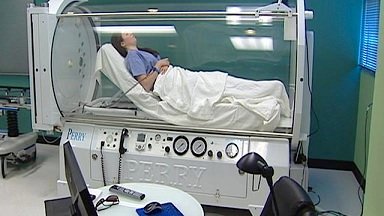
Hyperbaric oxygen therapy is a kind of treatment which requires oxygen with a pressure higher than the atmospheric pressure. Source [paraphrased by me]
This procedure is predominantly used to treat divers’ disease (decompression sickness) in which there is an embolism of air coming out as bubble from the sufferer’s body.
But asides that, there are other diseases in which hyperbaric oxygen therapy can be useful in treating. These include:
- Treatment of carbon monoxide poisoning. Because of the unstable nature of carbon monoxide (CO), it readily combines with oxygen to form stable CO2. So in the event of CO poisoning, passing 100% oxygen to the patient would “knock off” the CO by combining with them to form CO2.
- Ischemias and compartment syndrome
- Healing of wounds. Some wounds like diabetic foot, can be eased up with this kind of therapy
- Thermal burns, etc.
The list is vast, but in all these treatments, the expertise of a hyperbaric oxygen therapist is needed to monitor and readjust the flow of oxygen. So that “oxygen therapy” would not end up being “oxygen toxicity”.
For more info on hyperbaric oxygen therapy, click here.
Friday: Wearable Chair
Have you ever imagined being able to sit just anywhere? Well, don’t take your imaginations too far because, a type of wearable chair that allows the wearer to sit anywhere has finally arrived. This is also known as “Chairless chair”
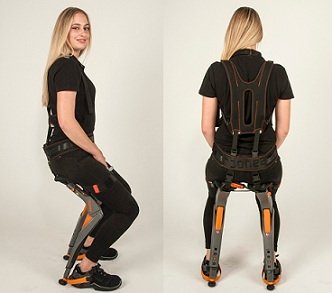
This was developed by a combined effort of Noonee Inc and Sapetti as part of their plans to revolutionize wearable mechatronics . This would definitely be useful for people that; by reason of their work; are made to stand for long hours, like factory workers.
Mechanics of the wearable chair
The chair is made of tough polyamide plastic, which is attached to the leg using some belts. It also has a release button. Once the wearer bends over in a squatting position; and the button is pressed, the “chair” would be locked up into place, providing a sitting position for the wearer.
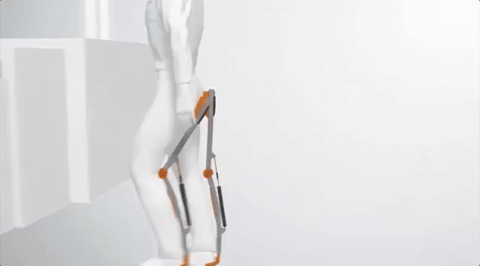
The application of this kind of technology is almost limitless as this is set to boost productivity of; especially; factory workers whose works get hampered by the need to stand for long.
I hope that this kind of chair would not potentially sideline the conventional kind of chair.
You can click here for more info.
Ok buddies, this is the summary of some of the things I learnt for the week. And until I come your way again, keep learning, and learning; @samminator says so.
Thanks for reading
References for further reading: Ref1, Ref2, Ref3, Ref4, Ref5, Ref6, Ref7, Ref8, Ref9, Ref10


gif by @foundation
Being A SteemStem Member
Thanks a lot @steemstem-bot :)
I think I love the wearable legs, looks interesting to me. I love all the things you have learnt this week they are in deed amazing.
Thanks a lot dear
Good weekly work ... the pica syndrome gives chills ... it is impressive all the syndromes that exist in the world ... and we do not know ...
Lol. They do exist
great post, if technologies like these could replace the wheelchair then there is hope for disabled people .
You're very correct bro
thanks sammie
Yup! I learnt something too.
Great work!
But..
Wait!
Pica syndrome... Eewww.
Strange appetite for weird stuff.
I love the chairless chair tho. Lolss
Lol. Thanks a lot for dropping by
Wow. So much information to take in. Incredible!! Well I’m not surprised... it’s Samminator 💯 💯 . Thanks so much for sharing. 🙏🏽
Lol. Thanks man
I really enjoy your writeup, I have learnt so many things. Never heard of the wearable chair until now. This is awesome!
Thanks a lot
Informative post Sir sammy..
Thanks
I couldn't believe what I just read.Pica syndrome.Some could have eating disorder?